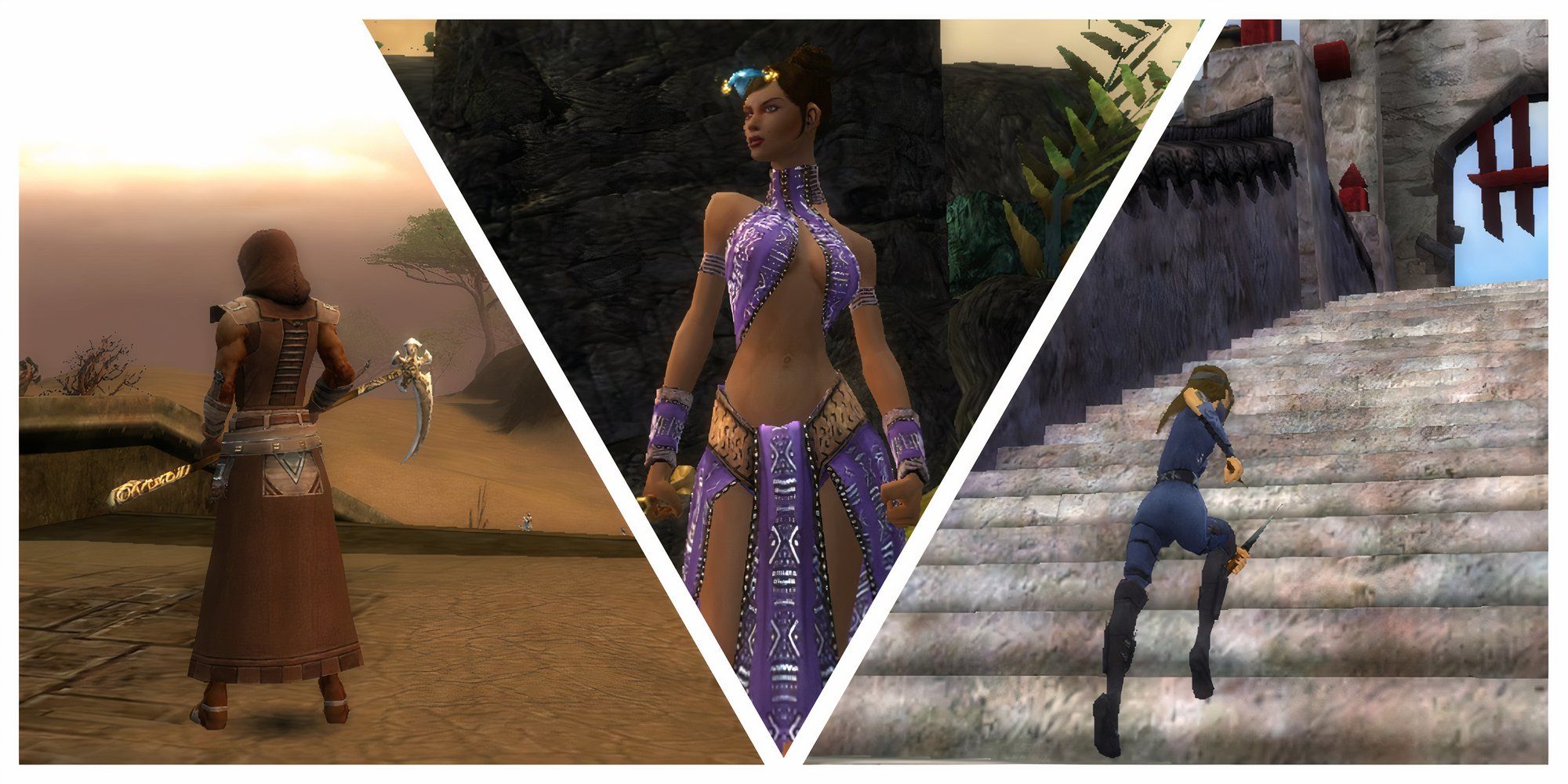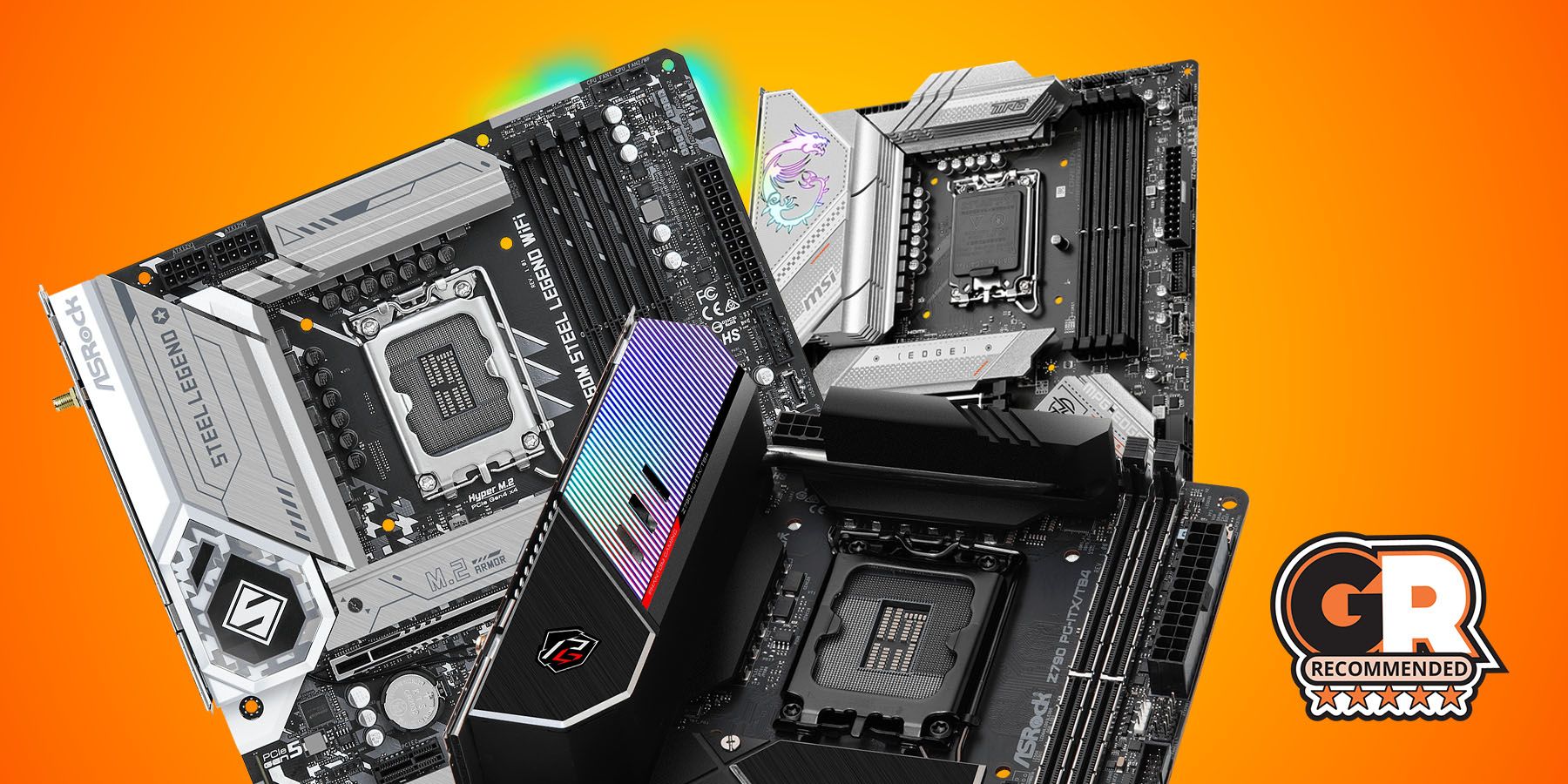Key Takeaways
- Monk excels at healing but lacks versatility due to its focus on party health.
- Warrior is a reliable tank with high armor, perfect for melee combat lovers.
- Assassin offers high-risk, high-reward gameplay with damage bursts and mobility.
The original Guild Wars impressed gamers with its wide variety of playstyles, in part thanks to its multiclass mechanic. However, while mixing and matching professions yields interesting results, player characters are very much tied to their primary professions.
While these professions have changed over the years with balance updates, Guild Wars has not seen any big changes in recent years beyond the 15th-anniversary update. As such, the professions will be ranked according to their viability in today’s build across each of Guild Wars’ campaigns (not just the endgame), their thematic appeal, and how much fun they are to play moment-to-moment.
10 The Monk
The Hit-Point Heal Bot
- Upsides: Always popular
- Downsides: Offers somewhat niche healing gameplay
- Best For: Those who love to be the healer
Monks only have one job in any Guild Wars, and that is keeping other players or party members alive. While smiting magic, which bypasses enemy armor and deals double damage to the undead, is part of their skill set, it is only really useful in niche situations. HP upkeep can be fun, but only for those who really enjoy filling that role.
Generally, a monk player will spend most of their time looking at their party’s health bars in a game of reverse whack-a-mole. A more proactive, preemptive health-maintaining playstyle exists, which involves their protection prayer skills, but it is only viable with another monk doing the work of reactive wound-mending.
9 The Warrior
The Boiler Plate Melee Fighter
- Upsides: Versatile and simple to pick up and play
- Downsides: Does not cover any special niche in the end-game
- Best For: Beginners, those who love melee combat or cool armor
As usual, for a game primarily centered around combat, the warrior profession is generally regarded as a safe baseline choice. With the highest armor in the game, the warrior is Guild Wars‘ tank, meaning that players who love to utterly destroy their enemies personally will favor the warrior, especially since they can master every melee weapon, even those from outside its three specialties (hammer, axe, and sword).
Warriors have the most restricted access to energy, and they do not combine well with most caster secondary professions, but taking along a spell or two won’t hurt. While the warrior doesn’t rank high, it is a perfectly robust class, and besides its mechanics, it has access to some of the coolest armor sets in the game.
8 The Assassin
The Up-Close-And-Personal Glass Cannon
- Upsides: Fast-paced and deadly up close
- Downsides: Somewhat fragile in the wrong hands
- Best For: Those who enjoy skill-based melee combat
The assassin is a combination of a plucky fighter and a spellcaster best suited to players who enjoy a high-risk, high-reward playstyle. While not as defensible as a warrior, they are capable of delivering a high amount of damage in short bursts, and in an area of effect.
Although they are not as well armored as other melee classes, a well-placed assassin enchantment or shadowstep spell (effectively teleporting) will keep a skilled assassin player alive. They are well-suited to using just about any weapon, including projectile weapons, as the assassin’s primary attribute, critical strike, works well with a ranger’s bow.
7 The Elementalist
The Nuke Caster With A Diverse Skill Set
- Upsides: Deals ranged, high damage and is easy to learn
- Downsides: Not as powerful as other classes at the end game (but still viable)
- Best For: Those who like to watch their enemies explode
Although the elementalist is ranked slightly lower for its end-game damage numbers, it is still a fine profession for new players and veterans alike. They gain access to ranged high-damage spells early on, and new players won’t have to struggle to learn the game’s mechanics for their effectiveness to pay off.
Their four elements generally perform the same function (fire for area-of-effect damage, earth for damage reduction, air for concentrated damage, and water for movement slowing and healing). Elementalists have an impressive amount of build potential, as their primary attribute, energy storage, allows them to comfortably chain-cast some of the most expensive skills in the game.
6 The Ranger
The Versatile Marksman And Beastmaster
- Upsides: Highly versatile, access to collectible pets
- Downsides: Struggles with too many spells
- Best For: Newcomers, pet lovers, nature enjoyers
Of all the primary professions to choose from, the ranger is probably the most versatile and well-matched with other classes. As well as pairing well with martial or caster professions, the ranger has a lot to look forward to with beast mastery, and collecting and training pets is a serious motivator for many players. Rangers can specialize against certain foes by way of elemental resistance in their armor.
Rangers are fast and the best “runners” in the game and have many defensive movement skills that can help escort the party from map to map. Their “expertise” primary attribute reduces the cost of marksmanship, trap, pet, and ritual skills, making them fluid and hard-hitting.
5 The Paragon
The Ultimate Party Booster
- Upsides: One of the highest damage dealers (with a party, henchmen, or heroes)
- Downsides: Low skill diversity
- Best For: Those who never fight alone
This heavily armored, party-centric class is one of the most powerful player-versus-environment professions in Guild Wars, thanks to some of the game’s final balance patches. However, they do suffer from a lack of skill diversity. The paragon’s core mechanic and theme is using their leadership abilities to buff and heal allies.
They maintain their chants, echoes, and shouts while using a projectile spear to damage foes from a distance. Like the other Nightfall exclusive profession, the dervish, the paragon was added as Guild Wars‘ last profession, meaning that they do not benefit from gaining skills or armor from the earlier two campaigns.
4 The Necromancer
Insidious Manipulation And Minion Mastery
- Upsides: High energy turnover, undead minions
- Downsides: Somewhat passive play
- Best For: Goths, emos
This profession has an obvious appeal for anyone who has ever dabbled (or has been mildly interested in) the goth aesthetic. Necromancers revel in attrition, creating and spreading debilitating conditions, stealing health through blood magic, and garnering an army of walking corpses made from the flesh of their enemies.
Necromancers thrive on death not only as a source of energy but also through the accumulation of corpses, both of their enemies and allies. They are reliably great members to have in a party, player or hero, especially when they come loaded with a “minion-mancer” build. However, since corpses can be a scarce resource, they tend not to play well with other deathly summoners.
3 The Dervish
The Enchantment-Powered Reaper
- Upsides: A high-damage dealing and durable melee fighter
- Downsides: Somewhat complex
- Best For: Fans of scythes and hoods
The dervish is the sublime combination of an aggressive melee fighter and an area-of-effect caster. Their scythes allow them to hit three enemies at once, and their (instantly cast) flash enchantments have an effect when applied and stripped away.
Some attack skills land harder when they remove enchantments, but dervishes enjoy several benefits for being under them, so there is a constant balancing act at play. They hit groups the hardest with their melee attacks but are renowned for their ability to spread conditions. Thematically, it’s hard to argue with a hooded, scythe-wielding holy warrior.
2 The Ritualist
The Spirit Spamming Static Summoner
- Upsides: Extremely diverse number of builds
- Downsides: Spirit builds can feel passive
- Best For: Players who enjoy farming or a relaxing playstyle
For those who prefer set-and-forget play, the ritualist is an excellent choice. The ritualist’s core strength is being able to spawn spirits (or the undead) with more vitality and hitting power. Since those spirits have their own AI, the ritualist is able to take care of other things, such as party buffing, offensive casting, or healing.
The ritualist is a great all-rounder, but with a build dedicated to spawning offensive spirits, it can put out some of the highest damage-per-second numbers in the game. In some situations, it can even handle itself out on the battlefield without a party.
1 The Mesmer
The Master Manipulator Perfect For Experienced Players
- Upsides: One of the highest damage dealers, extremely powerful in the right hands
- Downsides: Difficult to pick up for newcomers
- Best For: Players with advanced knowledge of the game’s mechanics
The mesmer offers some of the most interesting mechanical designs in Guild Wars and in multiplayer RPGs in general. They are easily one of the most powerful classes in the game, but only in the right hands. Mesmers are not recommended for completely new players, as their power depends on the player’s broad knowledge of Guild Wars‘ skills and mechanics.
This class can use their enemies’ attacks against them, systematically shutting down their energy (by adding it to their own pool) and blocking their skill recharges. This advanced profession (perhaps marked by their elite dress code) can mitigate damage from enemies and quickly strip their foes’ health by bypassing their armor entirely.








